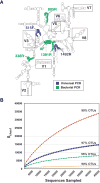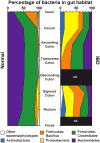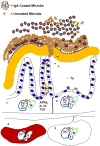Metagenomic approaches for defining the pathogenesis of inflammatory bowel diseases
- PMID: 18541218
- PMCID: PMC2872787
- DOI: 10.1016/j.chom.2008.05.001
Metagenomic approaches for defining the pathogenesis of inflammatory bowel diseases
Abstract
The human gastrointestinal tract is home to immense and complex populations of microorganisms. Using recent technical innovations, the diversity present in this human body habitat is now being analyzed in detail. This review focuses on the microbial ecology of the gut in inflammatory bowel diseases and on how recent studies provide an impetus for using carefully designed, comparative metagenomic approaches to delve into the structure and activities of the gut microbial community and its interrelationship with the immune system.
Figures



References
Publication types
MeSH terms
Substances
Grants and funding
LinkOut - more resources
Full Text Sources
Other Literature Sources

